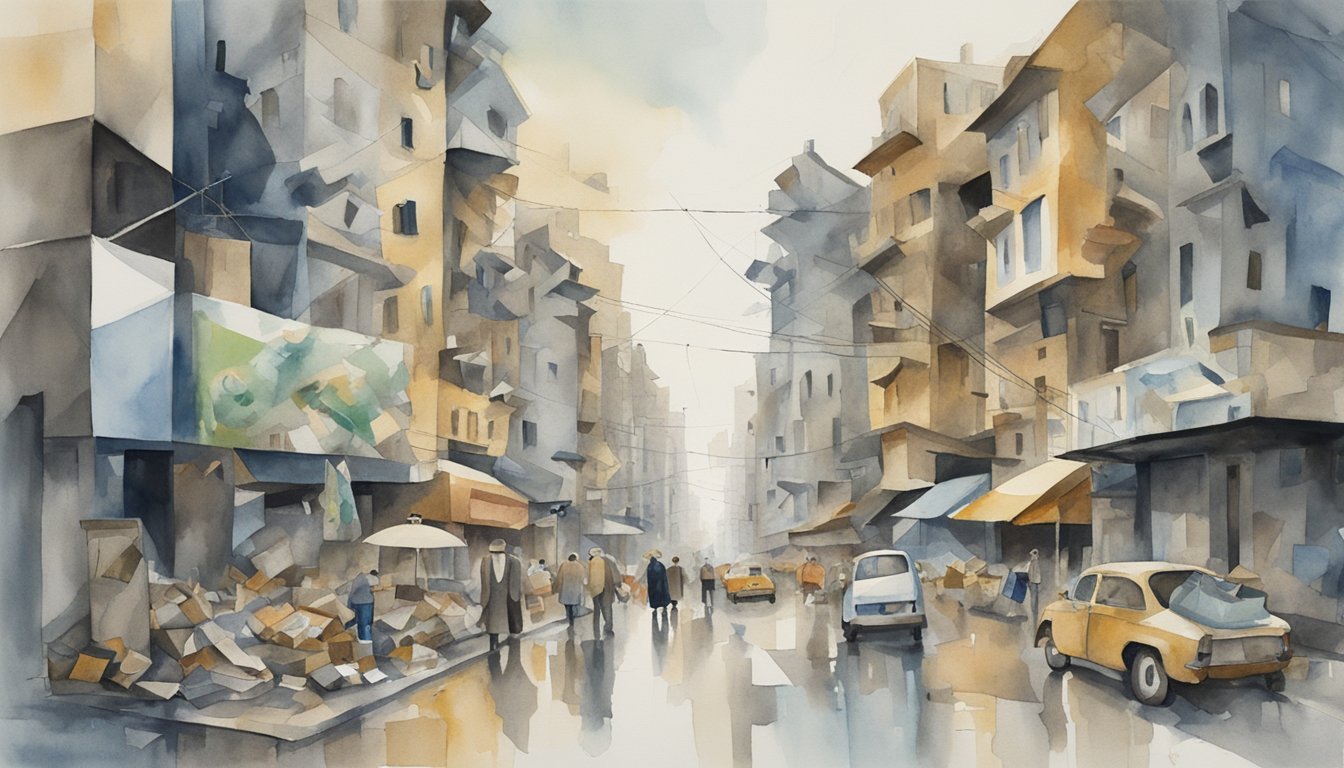Origins and Historical Context

The Dada movement, characterized by its avant-garde spirit and opposition to the norms of bourgeois culture, was birthed from the turmoil of World War I as a form of artistic anarchy. It not only challenged the conventional art styles of the time but also conveyed a profound disenchantment with the war and contemporary society.
World War I and Dada’s Emergence
The cataclysmic impact of World War I laid the fertile ground for the emergence of Dada. Intellectuals and artists were seeking a means to express their disillusionment with the nationalist fervor that spurred the conflict. In response, they fostered an art movement that embraced chaos and rejected the rationalism they blamed for the carnage of the war.
Zurich and the Cabaret Voltaire
In 1916, Zurich became a sanctuary for artists fleeing the ravages of war across Europe. It was here, in the neutral territory of Switzerland, where Dada found its voice within the bohemian enclave of the Cabaret Voltaire. This nightclub became a hub for the exchange of radical ideas and the staging of provocative performances that defied traditional art.
Influence of Hugo Ball and Emmy Hennings
Hugo Ball and Emmy Hennings played pivotal roles in shaping the Dada movement. As co-founders of Cabaret Voltaire, they cultivated a space that allowed for artistic innovation free from the constraints of mainstream aesthetics. Ball, particularly, is remembered for his development of Dada’s nonsensical language, while Hennings’ contributions as a performer and writer were instrumental in fostering the community that enabled Dada to thrive.
Key Figures and Artistic Expressions
The Dada movement sparked significant innovations in art, departing from traditional aesthetics and embracing the absurd. It boasted a roster of influential artists who pushed the boundaries of artistic expression, often incorporating everyday objects into their art to challenge conventional perceptions.
Marcel Duchamp and Readymades
Marcel Duchamp was a pivotal figure in bridging the gap between art and ordinary objects, pioneering the concept of the readymade. His most controversial piece was “Fountain,” an ordinary urinal presented as art, which questioned the very nature of art itself. Duchamp’s work was a cornerstone of Dada, demonstrating how art could emerge from mere items selected by the artist.
Expansion to Berlin and Cologne
The movement spread across Europe, with notable epicenters in Germany, particularly Berlin and Cologne. Both cities became hubs for Dada activity, fostering artists like Hannah Höch, who used photomontage as a form of social critique, and Max Ernst, a pioneer who later played a substantial role in Surrealism. These hubs resonated with the movement’s anti-bourgeois and anti-art establishment sentiments, often utilizing satire as a means to comment on the turmoil and absurdity of the era.

